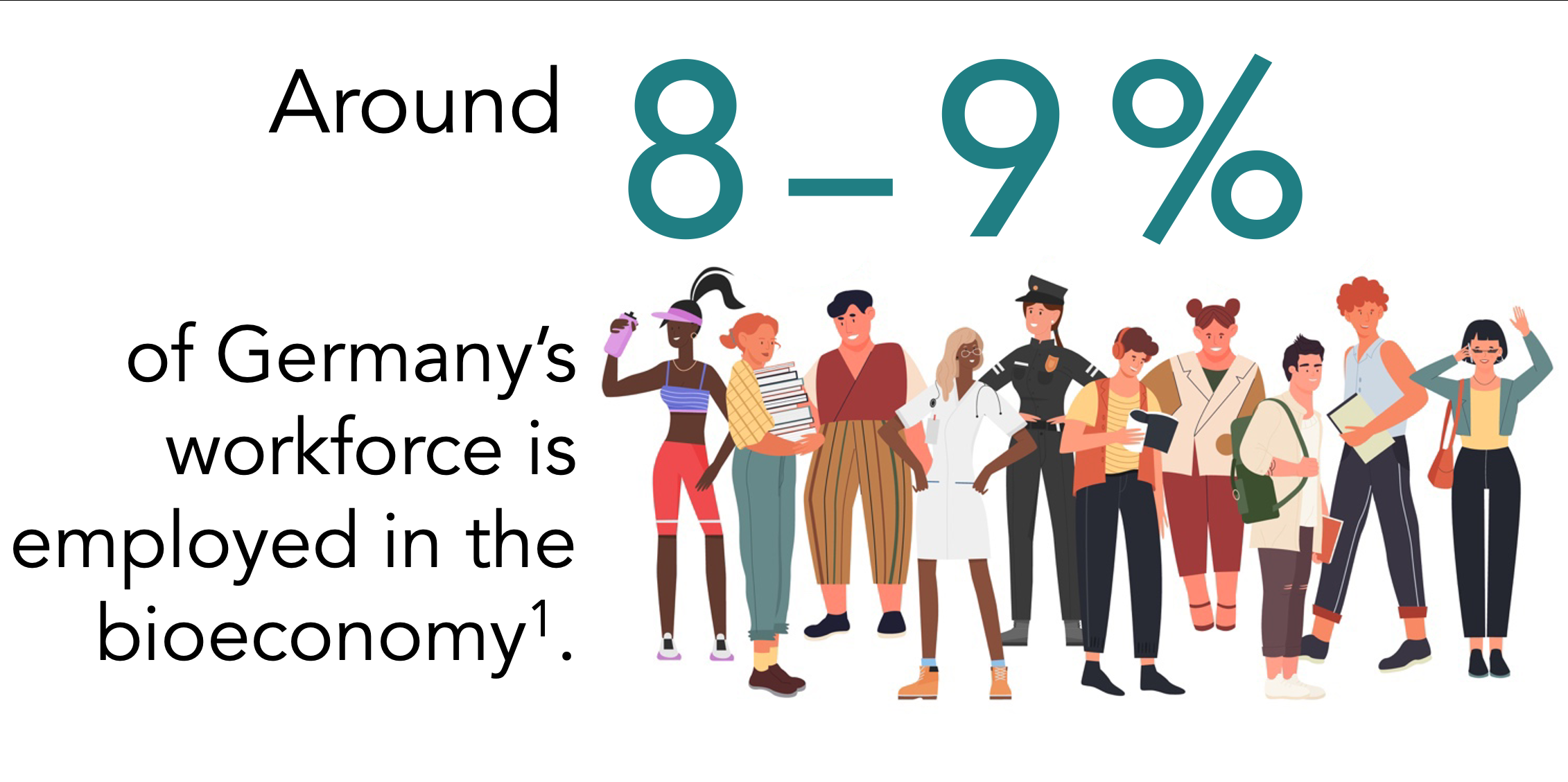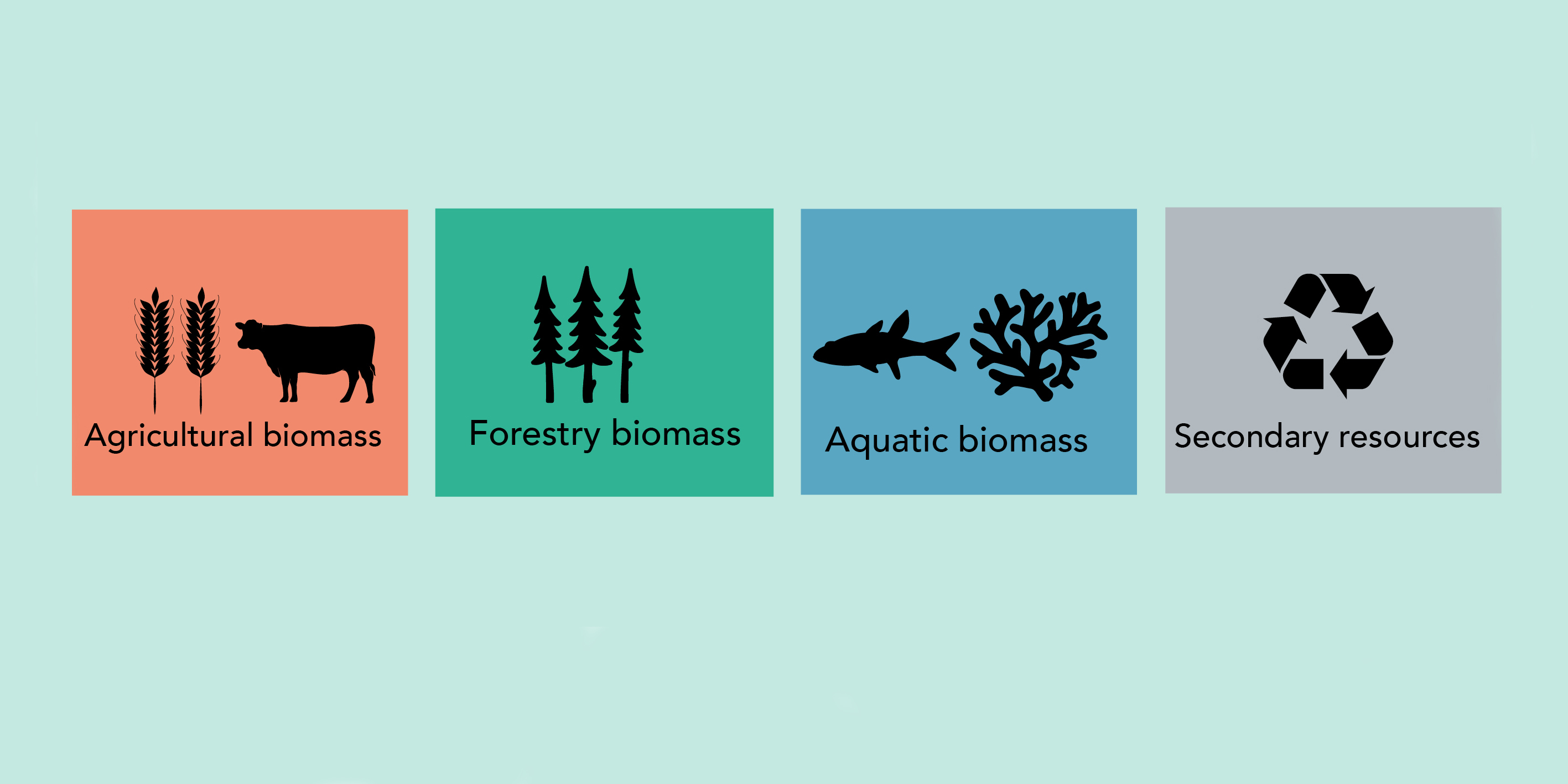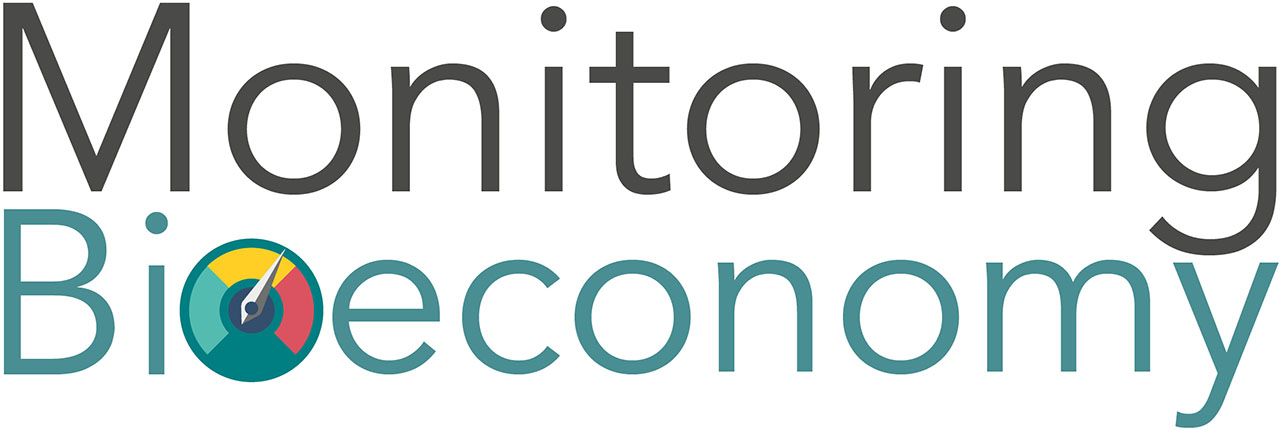Topics

Around one-tenth of the workforce in Germany works in the bioeconomy, generating around 5 to 8% of the country’s gross value added. Indicators to monitor social impacts are strongly linked to the sustainable development goals, both within Germany and abroad. Changed business practices and consumer behavior to enable circularity, consumption within planetary boundaries and a double decoupling are key elements of a societal-ecological transformation.

Half of Germany’s total land area is used for agriculture and forests cover approximately one-third of Germany’s territory. In combination with biomass from fisheries, these primary sectors produced nearly 186 Million dry tonnes of biomass in 2015. Secondary resources (from “waste” and residues) provide a further source, with an estimated technical potential of 86–140 million tonnes dry matter and a mobilizable potential of 14–48 million tonnes dry matter in 2015. Imports further supplement Germany’s biomass supply, as captured by footprints.

Nearly three-quarters of the biomass consumed in Germany is used for food and feed. The material use of biomass in the bioeconomy covers a wide scope of applications in both established and emerging markets. Bioenergy from secondary resources, in particular at the end of a cascade, can help unite goals towardenergy security and overarching sustainability.


